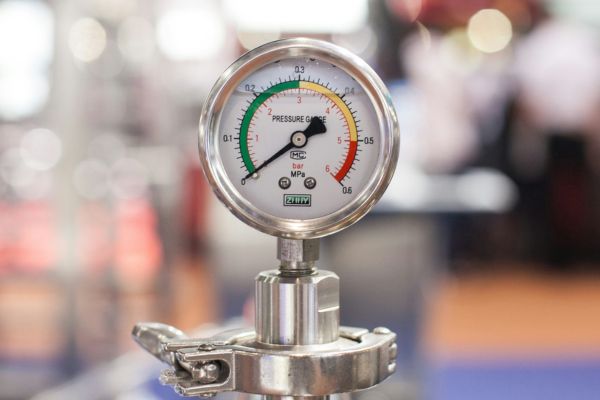A loan is classified as non-performing when a company in some kind of stressed situation. This can occur if it has not made scheduled payments on interest, capital reimbursement for 90 days or more past their due dates or it is still repaying the loan but it is unlikely to do so in the near future.
Since the Financial Crisis in 2008, the Non-Performing Loan (NPL) market has increased significantly in Europe and is seen to be putting a strain on the European Banking Union. As observed by the London Stock Exchange, although NPL ratios are reducing in countries such as Spain, Portugal and Italy, it does not mean that they are no longer a risk to the EU’s stability and financial system as a whole.
Valdis Dombrovsjis, the vice-president of the European Commission, said “As Europe and its economy gain strength, Europe must seize the momentum and accelerate the reduction of NPLs. This is essential to further reduce risks in the European banking sector and strengthen its resilience”.
Focus on Spain and Portugal
The default rate according to Bank of Spain data fell to 9.8% in May 2016, which is down from the 13.6% rate seen in December 2013. This was attributed to the overall credit balance in decline as it saw total loans decrease, year-on-year by 5.1% in 2016. However, an article by WolfStreet.com, has suggested that in 2018 consumer debt was back on the rise as banks have seen an increase in demand for consumer credit, where they issued 15% more loans than the year before for goods such as cars, furniture, electrical appliances and holidays. This is rising much faster than mortgage debt, even with the resurrection of the 100% LTV mortgage. With lending standards falling at an alarming speed, it is likely that we will see more stressed debt.
According to the South EU Summit, reducing NPLs has played a significant role in Portugal’s recovery and financial reform. However, Portugal’s NPL ratio still exceeds the European average and its overall debt ratio remains one of the highest in Europe. There is little chance of Portugal reducing this ratio without a partial write-off of its debt as stated on the online media site Vox Europe.
Portugal’s innovative approach to reducing their NPL ratio involves the three biggest banks in Portugal working together to create a platform to help accelerate the reduction of NPLs within banks. The country is clearing their bad loans at a significant rate and Portugal’s efforts in reducing its debt ratio has been reflected in their credit rating. S&P upgraded Portugal’s sovereign debt to BBB in March 2019 and Moody’s to Baa3 back in October 2018.
Remaining Greek debt
Greece has sparked attraction in their NPL market as they have seen a strong interest from international funds to buy Greek NPLs. According to the European parliament, Greek banks have the highest NPL ratio (44.8%) across the Euro zone, so it is no surprise that NPLs are a continued cause for concern for the economic future of the country and the problems it could bring to Europe’s financial system. According to CNBC, Greek systemic banks have agreed among themselves to reduce the non-performing loans between now and 2021 by EUR 50 billion. However there are concerns as to whether this can be achieved or if further state aid is required, or whether it is possible to use deferred tax assets for securitisation. Yannis Stournaras, the Governor of the Bank of Greece, has said the latter approach would not be an “unusual solution” given that “Portugal, Spain and Italy have all used deferred tax assets for securitisations.”
Italy the NPL giant
Although Greece and Italy share a similar narrative in terms of poor loan performance, it is important to note that Italy is the fourth biggest economy within the EU whereas Greece is ranked at sixteen, as reported by the International Monetary Fund.
Italy’s debts are seen as Europe’s biggest problem because of the economy's size, and according to Forbes, its debt-to-GDP ratio is expected to increase to 135% by 2020. Any new financial crisis would likely be the biggest in Europe, despite Italy showing signs of consolidation through write offs and sales of NPLs.
Regulatory steerage
Increased Regulation and demand from investors has created a market for non-performing loans. Although banks are reducing the amount of NPLs that they have on their balance sheets, they still account for EUR 780 billion of loans issued within the EU according to Investment and Pensions Europe. There is a wide gap between the typical bank valuations of NPLs and what investors are willing to pay for them. This is predominantly due to structural impediments, which include legal systems, duration of court proceedings, recovery rates and the speed of the recovery process as observed by the European Banking Authority and KPMG. This difference in valuations can mask the true position.
A recent press release announced that banks will need to put aside a set amount of money to cover potential losses, caused by loans that could become non-performing in the future. This will encourage banks to sell their NPL positions rather than have to maintain the required capital.
With the steps taken by Spain and Portugal to consolidate their NPLs, it has created a more transparent market which may lead to a narrower spread for the bid and ask price of these loans which could lead to growth within this section of the market. Furthermore, by consolidating the NPL market, this could lead to an increase in the money supply which would enable banks to provide finance to more financially sound companies, which in the long-run would have a positive aggregate contribution to employment, economic growth and innovation within the European economy.
Conclusion
The NPL market remains very important as an investment opportunity and as an essential part of Europe's economic make-up. We expect to see further developments in this sector. It remains essential for those involved in the area to establish sound risk management and valuations governance processes.
Tags: Investment Private Debt












